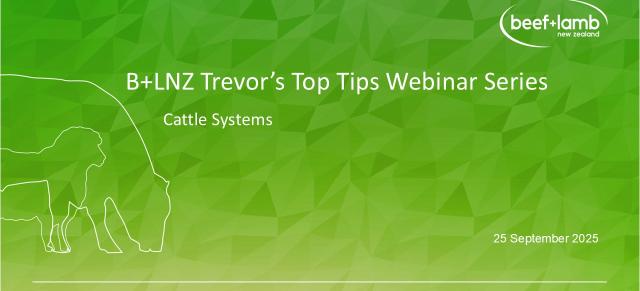Direct contact between a healthy animal and an infected animal is the most common way for pests and diseases to spread, therefore managing livestock movements and the introduction of new animals is particularly important.
NAIT and traceability
The National Animal Identification and Tracing (NAIT) scheme links people, property and livestock in New Zealand. The scheme provides traceability for individual animals, enhancing New Zealand's ability to respond quickly if there is a biosecurity incursion such as a disease outbreak.
Once tagged, animals are registered in a national database recording:
- the animal's location
- movements in the animal's life, and
- contact details for the person in charge of that animal.
Anyone in charge of cattle or deer must comply with NAIT regulations and animal movements must be recorded by both the sending and receiving parties within 48 hours of the movement occurring.
To find out more, visit the NAIT website.
Animal Status Declaration form
An Animal Status Declaration (ASD) form must be completed when:
- moving animals between properties (except for alpacas, llamas and horses)
- sending animals to slaughter (except for bobby calves)
Except where noted above, the ASD form applies to cattle, deer, sheep, lambs, goats, ostriches, emus, horses, alpacas and llamas. A separate ASD is required for pigs.
Recommended practices
- Check the health status of stock before purchasing. e.g. the results of TB or Johne’s disease tests and farm of origin history. Only buy livestock from suppliers who can provide information about veterinary treatments and the health status of their animals.
- As a minimum, hold new stock in quarantine (isolation in separate pens) for 24 hours to ensure they have had time to empty out prior to release from the yards, remembering to provide clean drinking water.
- Newly arrived sheep should be routinely given an appropriate quarantine drench. This would be best given on the farm of origin but in many cases will have to be given on arrival.
- On release from quarantine pens, monitor new stock in separate paddocks (ideally for seven days) and treat if necessary before integrating them with other mobs.
- Quarantine paddocks or pens should be as near as possible to the farm entrance and well away from other stock. As a minimum, a double fenced 3 metre gap should be provided between newly arrived animals and resident stock.
- These steps are especially important if buying through saleyards as animals in saleyards come into close contact with many stock from different sources so represent a particularly high biosecurity risk.
- Regularly inspect for fencing faults such as gaps, loose wires or washouts and swiftly maintain adequate boundary fences—do not allow nose to nose or other contact between your own and your neighbour’s stock.
- For livestock that temporarily leave the property (e.g. for shows) assess their likely contact with other livestock while away. If concerned or unsure, treat returning animals in the same way as new purchases.
- ALWAYS comply with your legal requirement to fully and accurately complete Animal Status Declaration (ASD) forms for every livestock movement you make off your farm and to receive and keep copies of ASDs for livestock movements on to your farm. Maintain copies of ASD forms and ensure that they are stored in good order.
- Remember to comply with your NAIT obligations (see below) on movement recording for cattle and deer to enable tracing of the source of exotic diseases or food safety contaminants.

